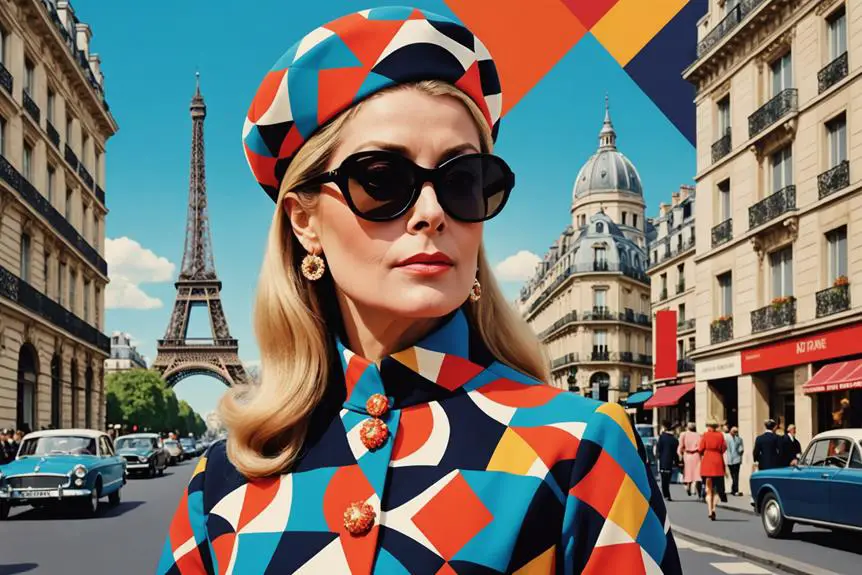In the 1960s, women's joggers became essential to the fitness movement, marking a shift in societal attitudes towards women's physical activity. You'd notice their baggy silhouettes and breathable cotton fabrics, designed for comfort and movement. This era celebrated youthful colors, blending style with function. As jogging gained popularity, it challenged traditional gender norms, empowering women to engage publicly in sports. Media perceptions shifted from skepticism to acceptance, enhancing the visibility of women in athletics. If you're curious about how this trend laid the groundwork for modern activewear, there's much more to explore in the evolution of women's fitness fashion.
Emergence of Women's Joggers
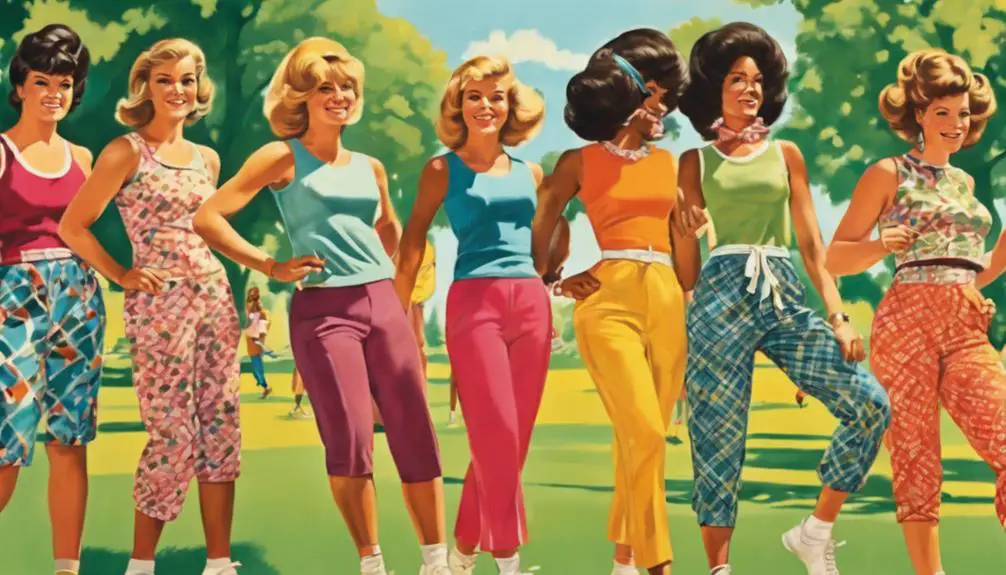
In the 1960s, as the fitness movement gained momentum, women began to embrace more active lifestyles, leading to the emergence of joggers specifically designed for them. This shift wasn't just about exercise; it represented a broader transformation in how women viewed their roles and capabilities. The publication of Bill Bowerman's best-selling book in 1967 played a pivotal role, promoting running as a healthful activity that women could—and should—participate in.
Fashion brands quickly recognized this trend, introducing women's joggers that combined comfort and style. These athletic wear pieces were crafted from flexible fabrics, allowing for greater mobility, which was essential for various physical activities. As joggers became more popular, athletes and celebrities began sporting them, solidifying their place in both casual and exercise settings.
This cultural acceptance of women's joggers was significant, as it coincided with an evolving perception of women in sports. No longer relegated to the sidelines, women were stepping into the spotlight, paving the way for future developments in athletic wear. The emergence of women's joggers in the 1960s marked a key moment in this ongoing journey towards equality in fitness and fashion.
Cultural Shift Towards Fitness
The 1960s witnessed a remarkable cultural shift towards fitness, with recreational jogging emerging as a vibrant activity embraced by women. This shift was not merely a trend; it was a reflection of a broader health movement that encouraged individuals to prioritize physical well-being. Influential figures like Bill Bowerman, through his 1966 pamphlet and 1967 best-seller, played a pivotal role in normalizing exercise for women, transforming jogging into an accessible and appealing form of fitness.
As jogging became synonymous with improved cardiovascular health, medical endorsements further propelled women into running, showcasing the tangible health benefits of this activity. The rise of female joggers challenged traditional societal norms, allowing women to engage in public physical activity that had once been discouraged. This newfound freedom was both empowering and revolutionary.
Media coverage of women's jogging shifted from skepticism to celebration, mirroring society's growing acceptance of fitness as an essential part of women's lifestyles. This cultural shift not only redefined how women viewed exercise but also fostered a sense of community and belonging among those who embraced jogging, paving the way for future generations to prioritize fitness as a core aspect of their lives.
Design Features of 1960s Joggers
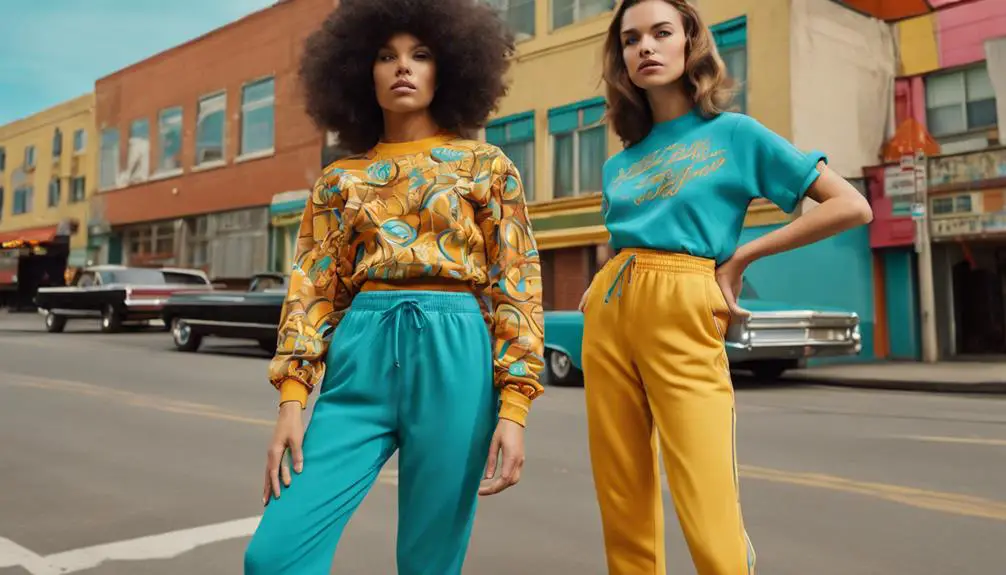
While embracing fitness became increasingly popular among women in the 1960s, the design features of joggers evolved to meet their needs for comfort and functionality. The baggy silhouette of these joggers provided ample room for movement, making them ideal for a variety of physical activities.
| Feature | Description |
|---|---|
| Fabric | Initially wool, later cotton for breathability |
| Waistband | Elastic waistbands for a secure fit |
| Color Palette | Vibrant shades and pastel tones |
The fabric of choice shifted from wool to cotton jersey knit, offering improved breathability and comfort. This change reflected the growing demand for athletic wear that could double as casual leisurewear. The elastic waistbands not only guaranteed a secure fit but also allowed for the natural movement of the body, catering to the active lifestyle women were adopting.
Moreover, the vibrant colors and pastels echoed the youthful spirit of the era, making joggers not just functional but also fashionable. As joggers gained popularity, they symbolized a significant shift in women's fashion, merging practicality with style in a way that resonated with the evolving cultural landscape.
Jogging's Popularity Among Women
As women's joggers evolved in design and style, they became more than just functional clothing; they played a key role in popularizing jogging among women. In the 1960s, the broader fitness movement began to emphasize health and wellness, making jogging an attractive option for women seeking to improve their physical well-being. The introduction of stylish and functional women's athletic wear, like joggers and tracksuits, made it easier for women to engage in this activity, transforming jogging from a niche pursuit into a mainstream fitness trend.
Pioneers like Kathrine Switzer shattered gender barriers, running marathons and proving that women could participate in sports just as vigorously as men. Her influence inspired countless women to lace up their running shoes, eager to reap the fitness benefits associated with jogging. Medical research during this time highlighted improved cardiovascular health linked to regular jogging, further motivating women to adopt this form of exercise.
Media Perception of Jogging
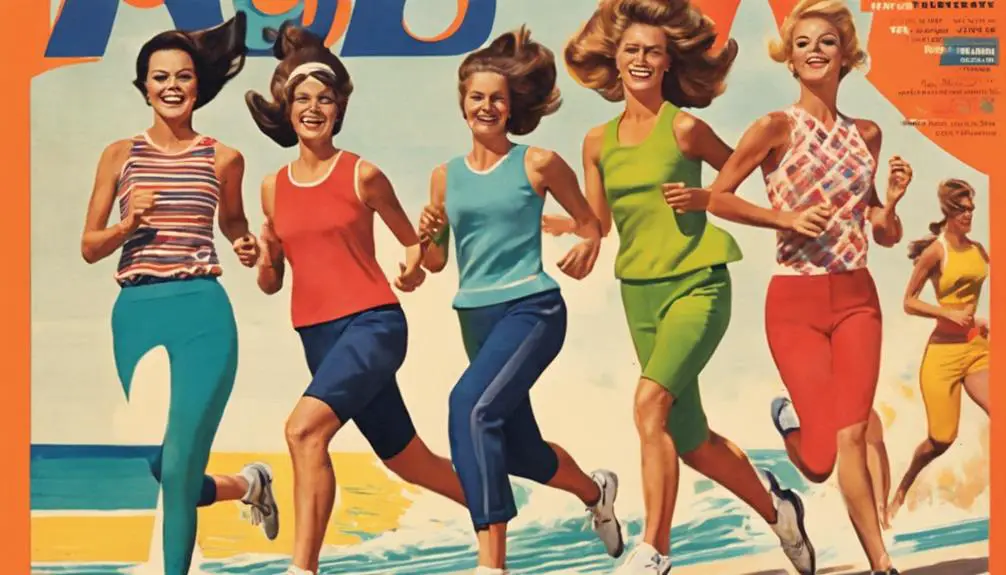
Skepticism surrounded jogging in the late 1960s, with media portrayals often reflecting societal apprehensions about this new trend. Articles highlighted various societal concerns, particularly regarding adult men running in public spaces. The Chicago Tribune, for instance, noted that neighbors often viewed jogging as an odd pastime, questioning the motives of those who embraced it. This skepticism was not just a matter of personal opinion; it extended to law enforcement, which expressed worries about pedestrian safety on highways. Some police even intervened, showcasing the legal challenges that early joggers faced, such as Dick Cordier, who battled societal resistance head-on.
Media coverage during this period largely emphasized these concerns, framing jogging as a potentially foolish endeavor rather than a legitimate form of exercise. However, as time progressed, perceptions began to shift. The initial skepticism gradually transformed into acceptance, which played a pivotal role in jogging's mainstream popularity. This evolution in media representation not only reflected changing attitudes but also contributed to the integration of jogging into fitness culture, ultimately paving the way for greater acceptance of women joggers in the following decades.
Influence of New Zealand
Bill Bowerman's visit to New Zealand in 1962 proved to be a pivotal moment in the evolution of jogging in the United States. While there, you'd witness a vibrant running culture, deeply rooted in the training methods of Arthur Lydiard. Lydiard's emphasis on long-distance running for fitness resonated with Bowerman, sparking a new approach to exercise back home.
Upon returning, Bowerman published a pamphlet in 1966 that introduced jogging as a recreational activity, effectively popularizing it among Americans. The pamphlet not only shared insights from New Zealand but also highlighted the cardiovascular health benefits of jogging, which began to gain traction in the United States. This research solidified jogging's reputation as a legitimate form of exercise, moving it beyond mere fitness trends.
Bowerman's commitment, influenced by New Zealand's running ethos, laid the groundwork for the modern running movement that emerged in the 1960s and 1970s. His efforts helped shift perceptions, inviting a diverse group of people to embrace jogging as a new lifestyle choice, ultimately paving the way for the rise of women joggers in the years to come.
Jogging and Social Acceptance
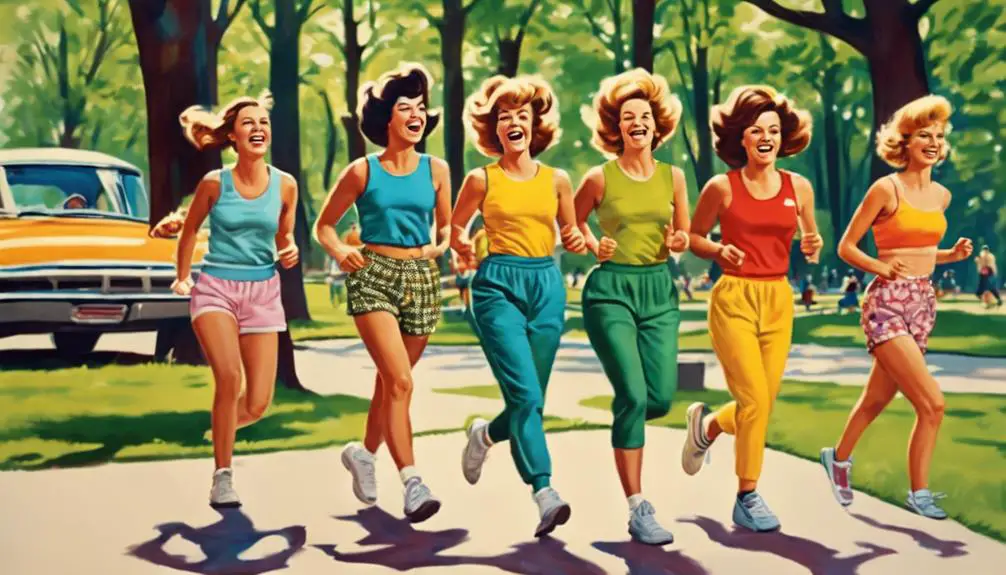
The evolution of jogging in the 1960s didn't just hinge on the insights from New Zealand; it also faced significant societal hurdles, particularly regarding women's participation. At the time, jogging was often met with skepticism, as conventional norms deemed it inappropriate for women to engage in such physical activities in public. This perception, however, began to shift as the decade progressed, leading to a growing social acceptance of women's joggers.
By the end of the 1960s, the foundation for a burgeoning fitness culture was laid, paving the way for increased awareness of health benefits and athleticism among women. The emergence of specialized women's joggers, designed for comfort and performance, mirrored this acceptance, transforming jogging into a socially acceptable and fashionable activity. As media coverage expanded and celebrity runners popularized the sport, societal attitudes began to evolve.
This transformation not only encouraged women to participate in jogging but also ignited a broader conversation about female athleticism. The 1960s set the stage for future generations, enabling women to embrace fitness without the stigma that once encumbered them.
Enduring Legacy of 1960s Joggers
Throughout the decades, the influence of 1960s joggers has remained remarkably significant in shaping women's athletic wear. The introduction of joggers as a fashionable and functional option marked a pivotal shift in how women approached fitness and comfort. Made from jersey knit fabric, these joggers emphasized ease of movement, appealing to women who were increasingly engaging in active lifestyles.
As you explore the legacy of this era, you'll notice how these joggers challenged traditional gender norms. Women began to break free from restrictive clothing, embracing a more athletic identity that included running and sports. Brands like Le Coq Sportif were instrumental in popularizing this trend, turning joggers and tracksuits into symbols of both athleticism and leisure.
Today, the echoes of the 1960s joggers resonate in contemporary athleisure trends. The blend of comfort and style you've come to expect from women's casual wear can be traced back to this groundbreaking movement. As you navigate the world of athletic wear, remember that the choices you make are rooted in the bold strides taken by women in the 1960s, forever transforming how you express your identity through fashion.
Frequently Asked Questions
Did They Have Sweatpants in the 60s?
Yes, sweatpants were widely available in the 1960s, evolving from their athletic origins to become a staple of casual youth culture. Their comfortable design reflected a growing trend towards relaxed, active lifestyles during that era.
What Year Were Joggers Popular?
Joggers gained popularity in the late 1960s, coinciding with the fitness movement. By the early 1970s, they became a common sight in parks, reflecting a cultural shift toward embracing active lifestyles for everyone.
What Types of Clothes Were Popular for Females in the 1960s?
In the 1960s, you'd notice women embracing mini skirts, shift dresses, and tailored pants. Bold patterns and bright colors dominated the scene, reflecting a vibrant youth culture that celebrated freedom and self-expression through fashion.
When Did Joggers Become a Thing?
Joggers became popular in the mid-1960s as jogging emerged as a trendy activity. Bill Bowerman's advocacy and publications helped shift public perception, making joggers a staple for both exercise and casual wear in everyday life.



